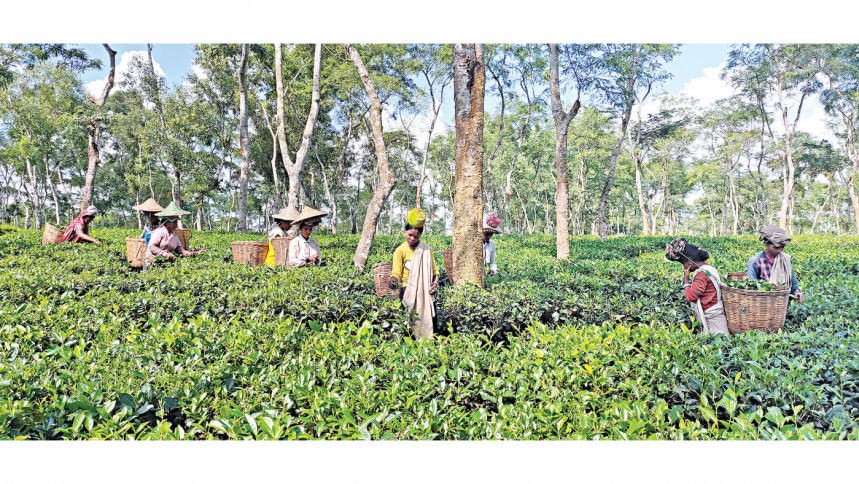Tea production went down last year

Tea production in Bangladesh has decreased by nearly 3 per cent year-on-year in 2022.
According to state-run Bangladesh Tea Board (BTB), nearly 94 million kilogrammes (kg) were produced last year.
Talking to The Daily Star, M Shah Alam, chairman of Bangladesh Tea Association, representing tea estates of Sylhet and Chattogram, blamed inadequate rainfall in the first half of 2022 and a halt to production for a few weeks for labour unrest later in the year.
The year's target could not be achieved, he said. The target was 100 million kgs, according to the BTB.
The weather was hot and dry, leading to a red spider mite infestation, for which plucking of the leaves was halted, he added.
The same was stated by Sumon Shikder, senior planning officer of the BTB.
M Shah Alam, chairman of Bangladesh Tea Association, representing tea estates of Sylhet and Chattogram, blamed inadequate rainfall in the first half of 2022 and a halt to production for a few weeks for labour unrest later in the year
Tea workers went on a two-hour strike every day from August 9 last year demanding an increase in wages. From August 13, they went on an indefinite strike. They joined work from August 28 following an agreement.
Plucking was halted during the month since the leaves can be availed every seven or eight days, affecting production, said an official of Bangladesh Tea Research Institute.
Garden owners earlier claimed that the strike would affect production and cause losses.
Meanwhile export of tea and associated earnings has increased.
In 2021, 0.68 million kg was exported, bringing in Tk 180.57 million. In 2022, it increased to 0.78 million kg and Tk 196.31 million respectively.
This was apparently for quality enhancements, focus on retail packs and production being higher than domestic consumption, said Shamim Khan, managing director of the Halda Valley Food and Beverage.
However, 2.17 million kg of tea worth Tk 347.14 million was exported in 2020.
In Bangladesh, 45 per cent of the tea produced is consumed at the household level while the rest at tea stalls, restaurants, and offices.
Tea is a part of social and professional life in the country, making it one of the most-consumed beverages and it is popular among low-income groups as well.
Local tea brands dominate the domestic market with a 75 per cent share while non-branded producers account for the rest.
The 167 tea gardens in the country cover almost 280,000 acres of land. Bangladesh is currently listed as the world's ninth largest tea producer, accounting for around 2 per cent of the world's total production.
A total of 90 of the tea gardens are in Moulvibazar, which accounts for 55 per cent of the tea produced in the country. Habiganj is the second largest producer of tea, contributing 22 per cent.
China is the largest producer of tea in the world, followed by India which is the second-largest country in the production of tea.
Also, Sri Lanka, Kenya, Korea and Japan were rated as the world's largest tea producing countries.
The global tea production amounts to over $17 billion annually, while world tea trade is valued at about $9.5 billion, accounting for an important source of export earnings, according to the Food and Agriculture Organization.
One key characteristic about tea is that smallholders are responsible for 60 per cent of world production, it said.
World tea production in 2021 increased to an estimated 6.5 million tonnes, from 6.3 million tonnes in 2020, as production of black tea recovered from the 2020 shortfalls in some of the major producing countries, such as India and Sri Lanka, the organisation also said.

 For all latest news, follow The Daily Star's Google News channel.
For all latest news, follow The Daily Star's Google News channel. 



Comments